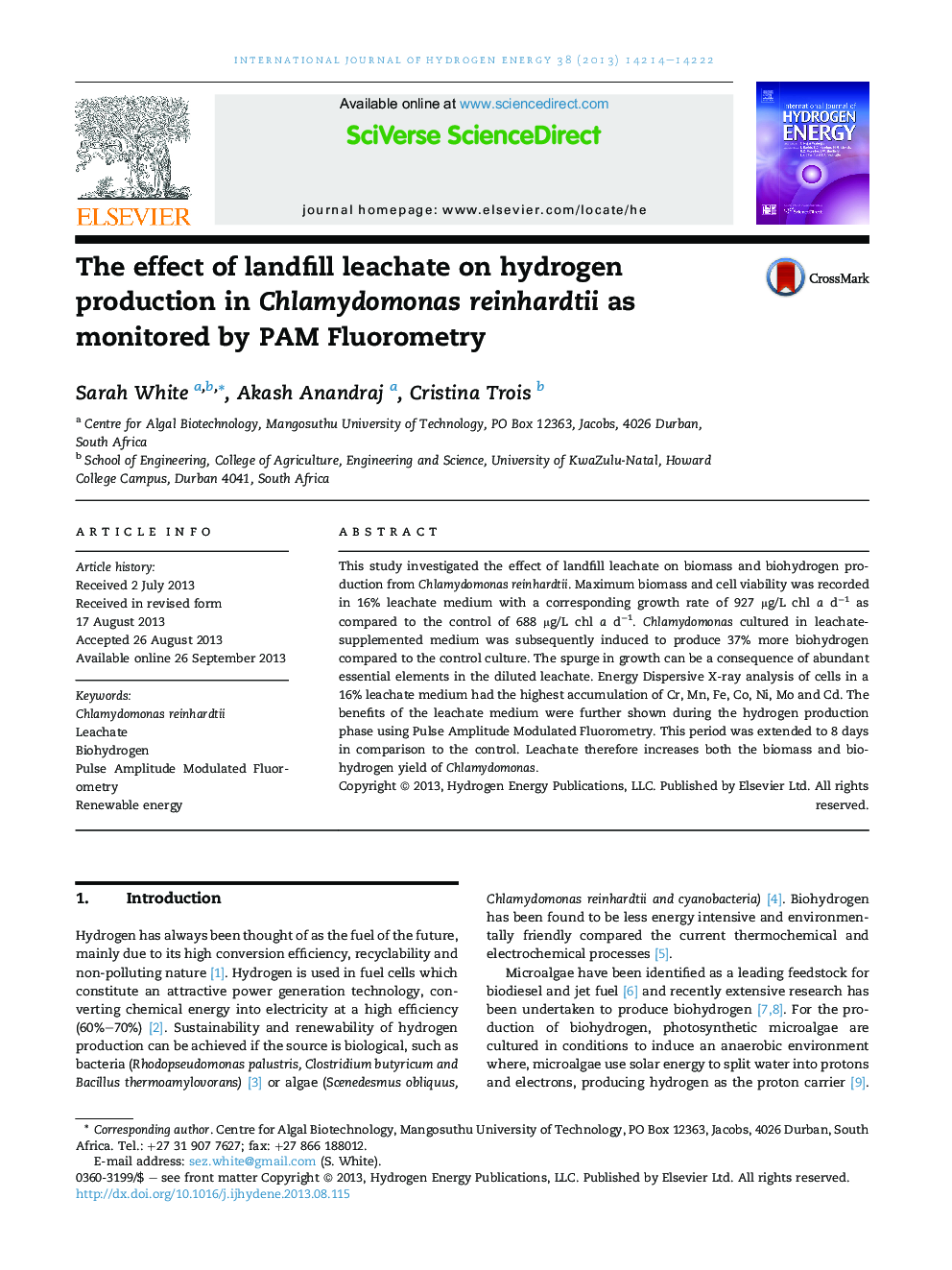| Article ID | Journal | Published Year | Pages | File Type |
|---|---|---|---|---|
| 1281381 | International Journal of Hydrogen Energy | 2013 | 9 Pages |
•A 16% leachate concentration increased biomass by 26%.•Leachate supplemented media increased biohydrogen yields by 37%.•Addition of leachate extended hydrogen production from 5 days to 8 days.•PAM Fluorometry was used to monitor PS I in the hydrogen production process.•A Novel Quantum Yield Ratio was developed to show photosystem regulation.
This study investigated the effect of landfill leachate on biomass and biohydrogen production from Chlamydomonas reinhardtii. Maximum biomass and cell viability was recorded in 16% leachate medium with a corresponding growth rate of 927 μg/L chl a d−1 as compared to the control of 688 μg/L chl a d−1. Chlamydomonas cultured in leachate-supplemented medium was subsequently induced to produce 37% more biohydrogen compared to the control culture. The spurge in growth can be a consequence of abundant essential elements in the diluted leachate. Energy Dispersive X-ray analysis of cells in a 16% leachate medium had the highest accumulation of Cr, Mn, Fe, Co, Ni, Mo and Cd. The benefits of the leachate medium were further shown during the hydrogen production phase using Pulse Amplitude Modulated Fluorometry. This period was extended to 8 days in comparison to the control. Leachate therefore increases both the biomass and biohydrogen yield of Chlamydomonas.
